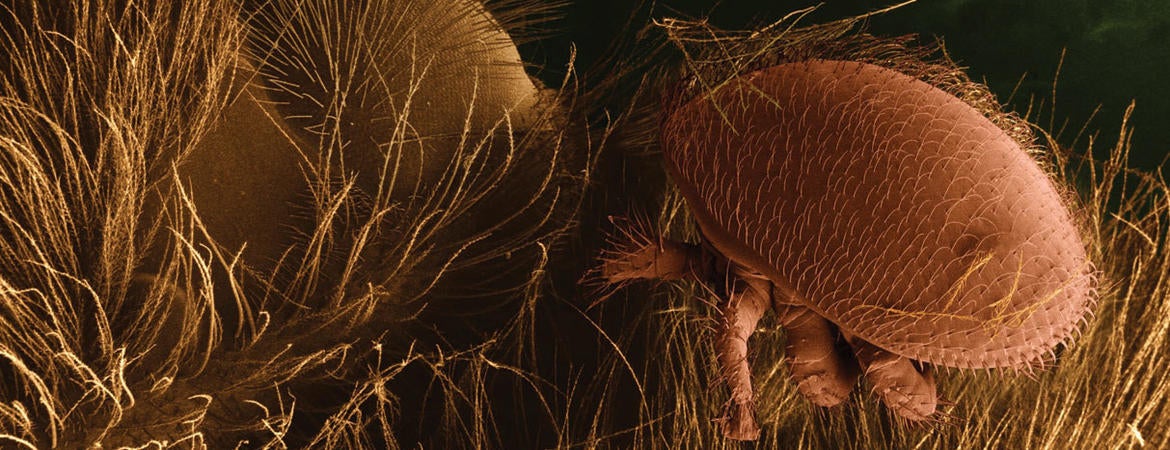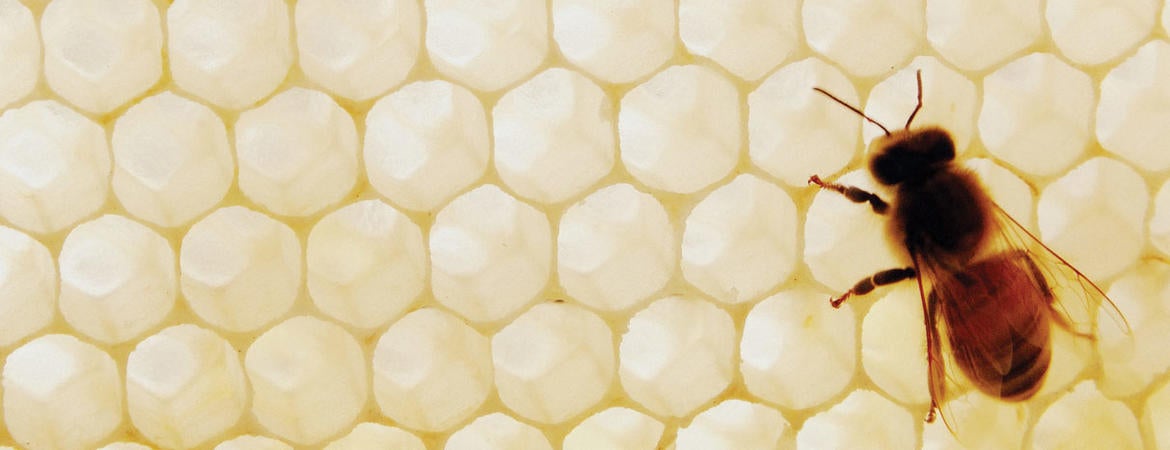Western honeybees are known to have more than 80 different parasites. Under typical conditions, the honey bee's two immune systems can control infections. The first is the individual immune system, which is based inside the body of each bee and relies on immune molecules and cells, similarly to that of humans. The second immune system is called social immunity and is based on group behaviors.
Bees will clean themselves or other sick bees, and they may remove infected or dead brood from the hive. As humans moved around, they picked up new parasites that are not effectively recognized by their immune system. The lack of an immune response allows these parasites to spread easily and cause so much damage that the colony eventually dies. At the top of the list of harmful pests is the varroa mite, which mainly infects the brood of bees. The mites latch onto honey bees and suck their blood. This weakens the bee and also transfers other viruses and bacteria.
Another more recently established pest of honeybees is the small hive beetle, whose larvae burrow and tunnel through combs, consuming brood, pollen, and honey. They also produce a repellent slime so bees do not remove them from the hive. As the combs are damaged, honey starts to ferment, and colonies collapse and die within weeks.
Industrial agricultural crops rely on chemicals to secure a successful harvest. To protect these monocultures from pests, toxic chemicals are applied to avoid crop losses. Modern pesticides are often systemic; they are not used on a crop when it gets infected, but are continuously present within the plant, including in its pollen and nectar.
Modern agricultural pesticides such as neonicotinoids are highly toxic to honeybees. Unfortunately, they have been deemed harmless because they are systemic and bees are not directly exposed to them. Instead, honey bees pick up small doses of pesticides when they forage for food. Recent research shows that even small exposures to these substances found in nectar and pollen have sublethal effects on bees. The bees are not killed, but the pesticides negatively affect their brain, communication skills, and the performance of colonies. Even worse, cocktails of different chemicals amplify such damaging effects on bees.
The honeybee colony is an incredibly complex social system that can adapt and cope with an amazing number of disturbances. However, continuous exposure to stress can result in serious health problems. Once a certain threshold has been reached, the colony is unable to recover and will collapse. Modern bees are exposed to a wide range of different stresses, such as novel parasites and pesticides, as described above. However, bee colonies can also experience nutritional stress caused by a lack of sufficient food from flowering plants or monocultures, droughts caused by global climate change, or inbreeding.
Furthermore, modern beekeeping requires honey bees to be transported thousands or tens of thousands of kilometers each year to get them to pollinate flowering crops in different regions. However, the stress from traveling, loading, and unloading can negatively impact a honey bee's immune system. Consequently, diseases that would be controllable under typical conditions can be extremely harmful to a stressed colony.


